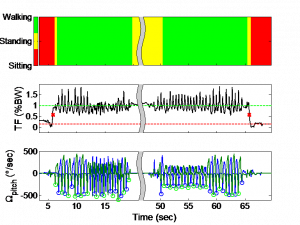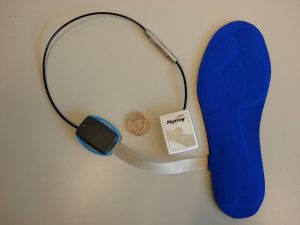- Contact person: Anisoara Ionescu
- People involved: Christopher Moufawad El Achkar
- Partners: CHUV – CUTR
- Funding source:
Overview
About one third of people aged 65 or older experience a fall every year. Hip fracture is a common traumatic result of a fall requiring hospitalization and possibly hip replacement surgery, resulting in a potential decline in independence. Patients with hip fracture undergo physiotherapy and rehabilitation to improve both their indoor and outdoor mobility. However, fear of falling, environmental conditions and frailty can negatively influence a patient’s mobility in daily life. It is therefore crucial to monitor the progress of daily life activity and mobility of older adults following hip fracture.

Methods
Hip fracture inpatients at the university hospital (CHUV) will be recruited to participate in a physical activity monitoring study. The patients will be equipped with instrumented shoes consisting of an inertial measurement unit and a pressure sensing insole. This system has shown its validity in recognizing basic and detailed activity types in semi‑constrained and free environments, by employing an activity classification algorithm based on movement biomechanics. Moreover, the system can be used to perform detailed gait analysis and postural transitions characterization.

Patients will be monitored at the hospital, on two separate days: a few days after admission (as soon as they are able to walk again) and 2 weeks later (before leaving the hospital). During these two weeks, they will undergo daily rehabilitation sessions. Additionally, they will perform function mobility tests such as the Timed Up and Go, chair rise and 20m walking test.

Outcomes
Physical activity and functional tests will be evaluated against clinical assessments of patients at baseline and follow up (14-16 days later). Several metrics will be computed based on physical activity data, notably the time spent walking, gait speed, transition durations and physical activity complexity. The functional tests will also be assessed by validated measures (transition durations, maximum gait speed). Improvements in both physical activity measures and functional test performances are expected after rehabilitation.